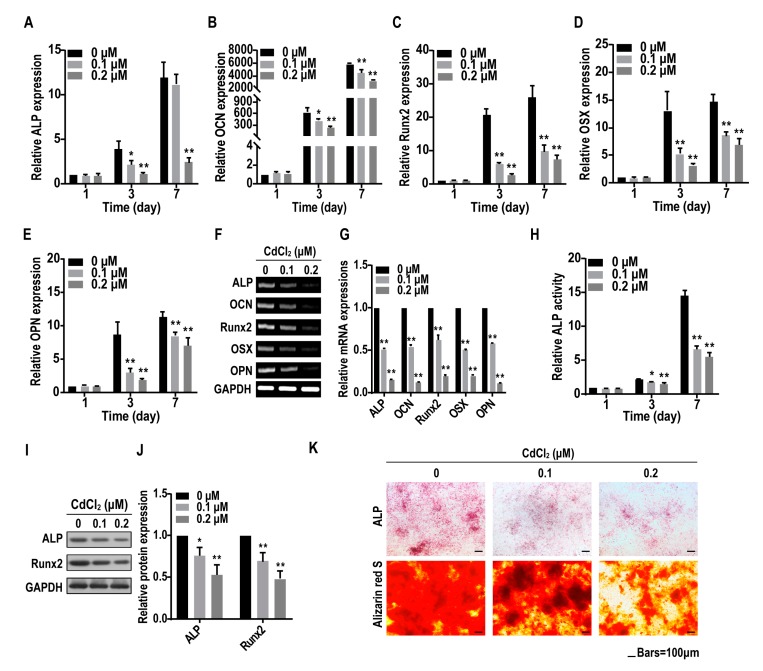Figure 3.
Cadmium inhibits the osteogenic differentiation of BMMSCs. BMMSCs were exposed to 0, 0.1, or 0.2 μM CdCl2 for 1, 3, or 7 days. (A–E) The mRNA levels of the osteogenic differentiation markers, such as alkaline phosphatase (ALP) (A), osteocalcin (OCN) (B), runt-related transcription factor 2 (Runx2), (C), osterix (OSX) (D), and osteopontin (OPN) (E) were measured by quantitative Reverse-Transcriptase Polymerase Chain Reaction (qRT-PCR) (mean ± SD, n = 3). * p < 0.05, ** p < 0.01, different from control BMMSCs. BMMSCs were exposed to 0, 0.1, or 0.2 μM CdCl2 for 7 days. (F) and (G) The mRNA levels of the osteogenic differentiation markers, ALP, OCN, Runx2, OSX, and OPN were determined by RT-PCR analysis (mean ± SD, n = 3). * p < 0.05, ** p < 0.01, different from control BMMSCs. BMMSCs were exposed to 0, 0.1, or 0.2 μM CdCl2 for 1, 3, or 7 days. (H) ALP activity was detected by ALP assay (mean ± SD, n = 3). * p < 0.05, ** p < 0.01, different from control BMMSCs. BMMSCs were exposed to 0, 0.1, or 0.2 μM CdCl2 for 7 days. (I) Western blots were performed, and (J) relative protein levels of ALP and Runx2 were determined (mean ± SD, n = 3). * p < 0.05, ** p < 0.01, different from control BMMSCs. BMMSCs were exposed to 0, 0.1, or 0.2 μM CdCl2 and subjected to osteogenic differentiation for 14 days. (K) The ALP content and the numbers of mineralization nodules were evaluated by ALP staining (upper) and alizarin red S staining (lower). Scale bar, 100 μm.

